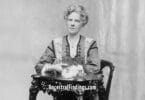Perched on the edge of Lake Ontario’s vast expanse, the Thirty Mile Point Lighthouse stands as a historical beacon. Its conception sprang from necessity, as the treacherous waters claimed many vessels, including the H.M.S. Ontario, lost in 1780.
The Spark of Illumination
The Lighthouse Board’s 1872 declaration crystallized the need for a lighthouse. Following Congressional funding in 1873, construction began, culminating in the first beam of light piercing the darkness on April 27, 1876. With its High Victorian Gothic architecture, the lighthouse married functionality with grandeur.
Keepers of the Flame
The initial headkeeper, Edwin Pratt, and his successor, Samuel Penfield, embodied the unwavering dedication required for their roles. These men were more than caretakers; they were the stalwart defenders of Lake Ontario’s mariners, providing critical weather and navigation information.
Stories of Vigilance
One of the early 20th-century keepers, George Rockwell, became legendary for his bravery. During a winter blizzard, the light’s mechanism seized under ice. Undaunted, Rockwell worked throughout the night, chipping away ice to keep the light operational, ensuring the safe passage of ships.
The Lighthouse’s Evolution
From its initial kerosene lamp to the incandescent oil vapor lamp of the early 1900s, the lighthouse saw technological advancements that allowed it to cast its beam further into the lake, offering enhanced safety for ships.
The Unforgiving Storm of 1913
The Great Lakes Storm of 1913, the “Big Blow,” brought hurricane-force winds. The keeper at the time, Henry J. Williams, kept the light burning, guiding ships away from the perilous shoreline despite the severe conditions.
The Community’s Involvement
The lighthouse served as a community symbol, with the grounds hosting gatherings and festivities, and the keeper often playing a central role.
Preservation and Protection
Facing erosion, extensive efforts were made to protect the lighthouse. The strategic placement of boulders along the shoreline in 1954 reflected the commitment to its preservation.
The Lighthouse’s New Chapter
Decommissioned in 1958, the lighthouse transitioned to a historic monument within Golden Hills State Park, inviting visitors to discover its rich past.
A Living Museum
As a museum, the lighthouse houses artifacts and displays recounting its history and the maritime heritage of Lake Ontario. It has become a place of learning about the shipwrecks it prevented and the lives it touched.
Educational Outreach
The site is an educational resource, offering insights into the region’s ecology and the lighthouse’s role in maritime history, attracting school trips and researchers.
The Lighthouse Today
The legacy of the Thirty Mile Point Lighthouse continues as it stands not only as a monument to a bygone era but as a testament to the enduring human spirit and our relationship with the natural world.
The Beacon’s Timeless Legacy
The Thirty Mile Point Lighthouse transcends its role as a navigational aid, becoming a chronicle of human persistence against nature. Each stone and relic contributes to a narrative of maritime history and heritage.
As a custodian of the past, it serves as a tangible link between the present and the days of sail and steam. It reminds us of the perilous journeys made by mariners and the advancements in navigation technology.
Now silent in its guiding role, the lighthouse speaks volumes through its continued existence. It is an emblem of efforts to preserve historical landmarks as a focal point for community, education, and remembrance.
Looking forward, the lighthouse remains an inspiration, encouraging reflection on history and the lessons of resilience and vigilance.
Visiting the lighthouse is an experience that bridges time, connecting us with those who watched over Lake Ontario. Their legacy continues to guide us, just as the lighthouse’s beam once guided ships through the night.
The Thirty Mile Point Lighthouse, with its storied past and hopeful future, is a cherished landmark that will continue to be celebrated and preserved. It stands as a symbol of our desire to keep history’s light burning bright for future generations.
Learn More:
If you’re interested in delving deeper into the history of the Thirty Mile Point Lighthouse or lighthouses in the Lake Ontario region, the following resources and avenues could be explored:
Several books document the history of lighthouses around the Great Lakes, which often include detailed chapters on individual lighthouses like Thirty Mile Point. Titles such as “Great Lakes Lighthouses Encyclopedia” by Larry Wright and Patricia Wright offer comprehensive information.
The Niagara County Historical Society or similar local organizations can provide historical documents, photographs, and personal accounts of the lighthouses in the area.
Museums such as the H. Lee White Maritime Museum in Oswego, New York, often have exhibits on the maritime history of the Great Lakes, including lighthouses.
Groups such as the Great Lakes Lighthouse Keepers Association (GLLKA) work to preserve lighthouses and their histories. They often have archives and resources for research.
Digital collections from libraries or universities in New York may have digitized materials related to the Thirty Mile Point Lighthouse and other regional lighthouses.
Since the Thirty Mile Point Lighthouse is located within Golden Hill State Park, the New York State Office of Parks, Recreation, and Historic Preservation may offer pamphlets, historical summaries, and other educational materials.
Documentaries might feature the lighthouses of the Great Lakes, which can be found through public broadcasting services or online platforms.
Websites dedicated to lighthouse history, such as Lighthouse Digest or the United States Lighthouse Society, can offer a wealth of information and connect enthusiasts.
Lighthouse Tours and Festivals: Attending tours offered by the lighthouses or local lighthouse festivals can provide immersive educational experiences.
Research papers and journal articles focused on maritime history or civil engineering might cover the construction, history, and technological aspects of lighthouses.






